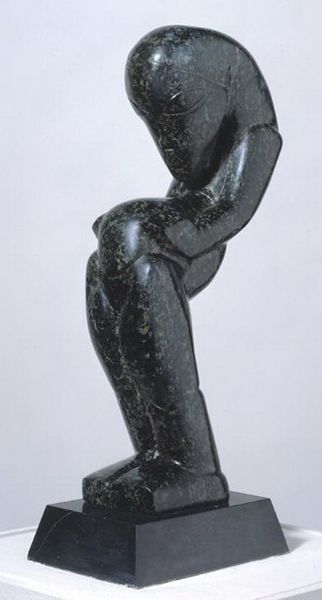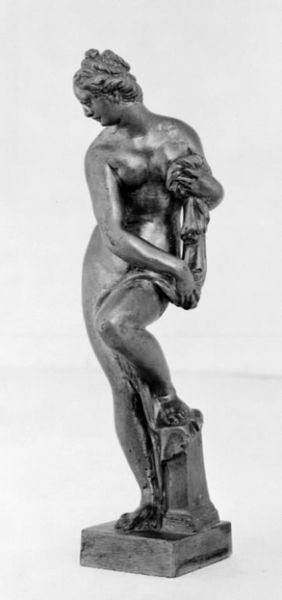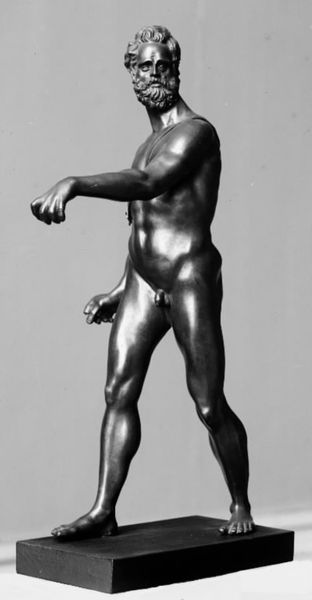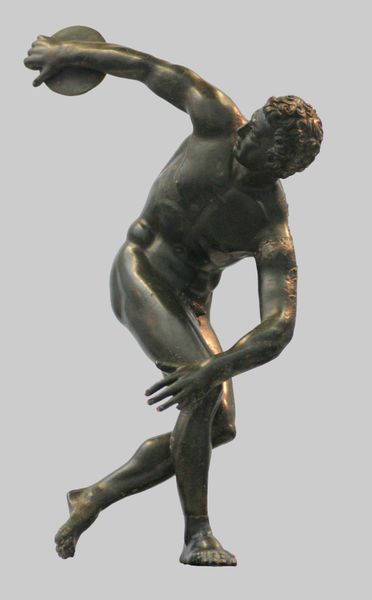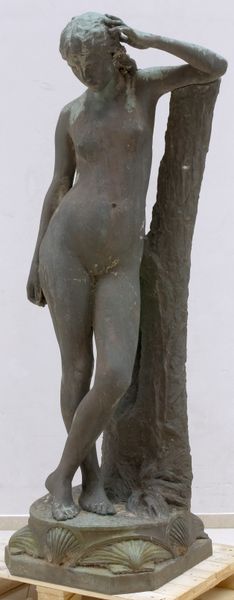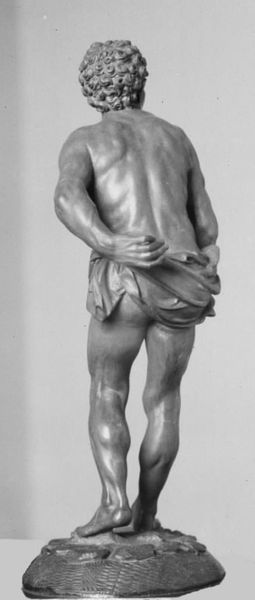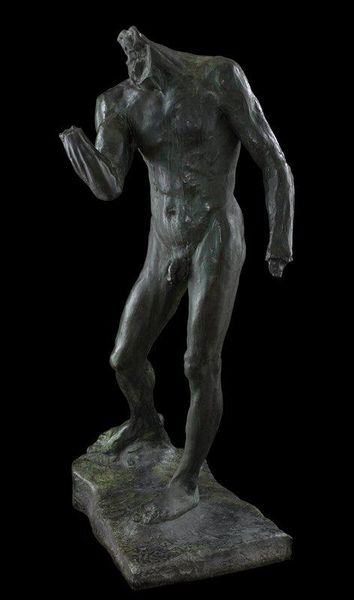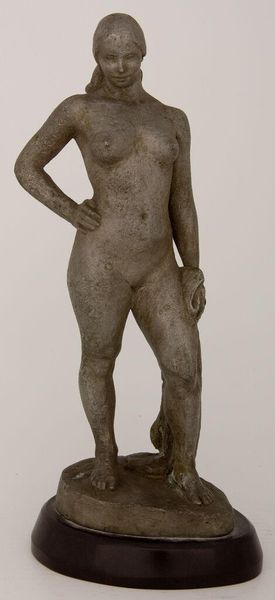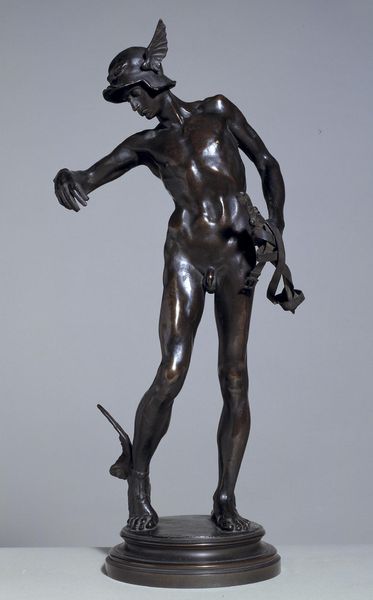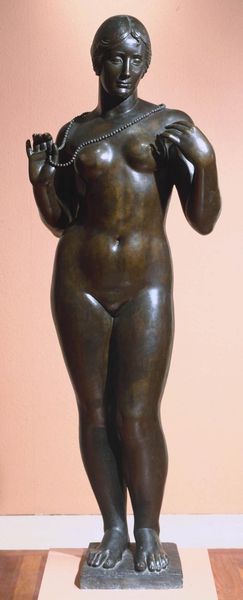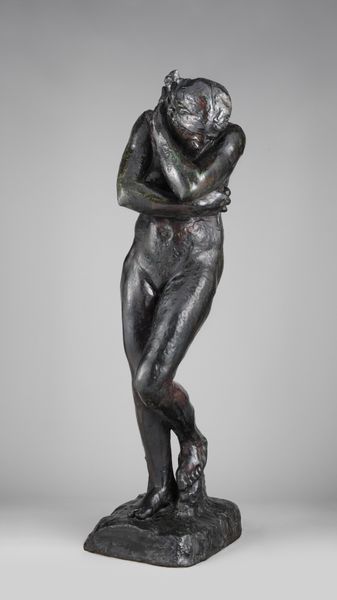
bronze, sculpture
#
sculpture
#
bronze
#
mannerism
#
figuration
#
sculpture
#
nude
Copyright: Public domain
Editor: We're looking at Benvenuto Cellini's "Satyr," a bronze sculpture created in 1542. There’s an interesting tension here. He's nude, yet seems almost self-conscious, even theatrical. What do you see in this piece? Curator: The "Satyr" immediately brings to mind a reservoir of cultural memory surrounding figures of classical antiquity, filtered through the lens of Mannerism. Cellini is deliberately playing with established tropes, the satyr as a symbol. Tell me, what qualities do you associate with a satyr? Editor: Well, mischievousness, indulgence, maybe a connection to wild nature? Curator: Precisely! Now, observe Cellini's satyr. He possesses that playful, sensuous energy, doesn't he? It's there in the relaxed contrapposto, the teasing hand raised to his head as if he's been caught in the midst of some revelry. The knowing look on his face conveys pleasure. The enduring potency of symbolic representation remains powerful. Editor: I see that! It makes me wonder what this sculpture signified to viewers in the 16th century compared to now. Does the symbolism shift over time? Curator: Absolutely! Symbols aren’t fixed; their meanings are continuously renegotiated. For a contemporary audience, this figure might evoke ideas of freedom or perhaps even challenge conventional notions of masculinity, due to the era's strict ideals. How has popular culture shaped your expectations of mythical figures? Editor: That’s really fascinating – how Cellini's work bridges different cultural moments. It gives the sculpture a rich context. Curator: Indeed, it speaks to the layered nature of cultural memory embedded within visual forms. We see echoes, transformations. Editor: Thank you. Thinking about how this statue and how viewers and cultural ideals have changed gives a new way to appreciate art.
Comments
No comments
Be the first to comment and join the conversation on the ultimate creative platform.
